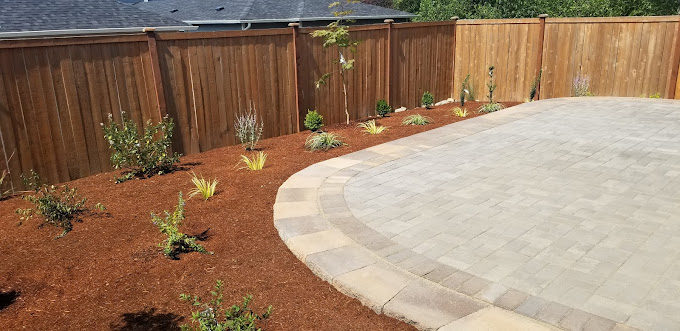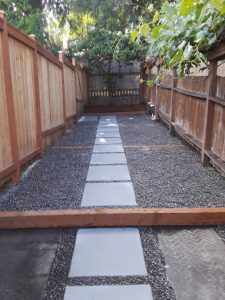Installing a Fence: A Guide to Success
Fencing is more than just a boundary; it’s a vital element that enhances your home’s privacy, security, and curb appeal. Whether you’re looking to create a peaceful retreat, protect your property, or add an aesthetic touch to your yard, installing the right fence requires careful planning and execution. This guide outlines essential tips for designing a custom fence, the step-by-step installation process, and the benefits of hiring a professional contractor for the job.
Top Tips for Custom Fence Design
| Tip | Description |
|---|---|
| 1. Determine Your Needs and Purpose | – Privacy: Consider taller fences made of solid materials like wood or vinyl. – Security: Opt for fences with locking gates and difficult-to-climb materials such as wrought iron or chain-link. – Aesthetics: Choose a design that complements your home’s architecture and landscape, considering color, style, and texture. |
| 2. Know Your Property Lines | – Survey Your Land: Ensure you know the exact boundaries of your property, potentially hiring a surveyor to avoid disputes. – Check Local Regulations: Verify zoning laws or HOA rules regarding fence height, materials, and placement. |
| 3. Select the Right Materials | – Durability: Choose materials based on climate and maintenance preferences. Wood requires regular upkeep, while vinyl is low-maintenance but may fade. Metal fences can rust if not properly maintained. – Cost Considerations: Balance your budget with material choices, considering long-term maintenance costs. |
| 4. Design for Functionality | – Gates and Access: Plan for gates that allow easy access while maintaining security. – Landscape Integration: Ensure the fence integrates seamlessly with existing landscaping, avoiding obstruction of views or natural light. |
| 5. Consider Custom Features | – Decorative Elements: Incorporate elements like lattice work, post caps, or custom gates for added visual appeal. – Lighting Options: Integrate lighting into your design for both aesthetics and safety, especially along pathways or entrances. |
Total Process of Fence Installation
| Step | Description |
|---|---|
| 1. Planning and Design | Discuss your needs with a designer or contractor to develop a custom plan that meets your requirements and preferences. |
| 2. Permitting and Regulations | Obtain necessary permits from local authorities and check for HOA regulations before proceeding. |
| 3. Material Selection | Purchase high-quality materials based on your design and budget. Ensure you have all necessary tools and equipment for installation. |
| 4. Site Preparation | – Clear the Area: Remove any obstacles like plants, rocks, or debris from the installation area. – Mark Boundaries: Use stakes and string to outline the fence’s perimeter, ensuring it aligns with property lines. |
| 5. Post Installation | – Dig Holes: Dig holes for the fence posts, typically 1/3 of the post length deep. Use a post hole digger or auger for efficiency. – Set Posts: Place posts in holes, securing them with concrete for stability. Ensure posts are plumb and aligned. |
| 6. Panel or Board Installation | – Attach Panels: For pre-made panels, attach them to posts using screws or brackets. For board fences, attach boards horizontally or vertically, ensuring they’re evenly spaced. – Secure Gates: Install gates, ensuring they swing freely and securely. |
| 7. Finishing Touches | – Trim Excess Materials: Cut excess posts or boards for a clean, polished appearance. – Stain or Paint: For wood fences, consider staining or painting to protect against weathering and enhance aesthetics. |
| 8. Cleanup | Remove debris, tools, and leftover materials from the site. Inspect the installation for any needed adjustments or repairs. |
| 9. Ongoing Maintenance | Plan for regular maintenance, such as cleaning, staining, or sealing, to extend the life of your fence and maintain its appearance. |
Benefits of Hiring a Contractor for Fence Installation
While installing a fence yourself may seem like a DIY project, hiring a professional contractor brings several key benefits:
| Benefit | Description |
|---|---|
| 1. Expertise and Experience | – Professional Knowledge: Contractors have extensive experience with fence installation, ensuring the job is done correctly and efficiently. – Design Guidance: They provide valuable insights on design options, materials, and best practices based on your needs. |
| 2. Access to Quality Materials | – Wholesale Pricing: Contractors often have access to materials at wholesale prices, potentially saving you money. – High-Quality Products: They recommend durable, high-quality materials suited for your climate and intended use. |
| 3. Time Efficiency | – Faster Installation: Professionals complete installations faster than DIY approaches due to their experience and equipment. – Less Disruption: Hiring a contractor minimizes disruption to your daily life. |
| 4. Proper Tools and Equipment | – Specialized Equipment: Contractors have the necessary tools and equipment, ensuring the job is done safely and effectively. – Safety Practices: They follow safety protocols to prevent accidents during installation. |
| 5. Consistent Quality | – Guaranteed Workmanship: Contractors often offer warranties, ensuring that any issues that arise will be addressed. – Attention to Detail: Contractors pay attention to detail, resulting in a polished, professional-looking fence. |
| 6. Liability and Insurance | – Protection Against Accidents: Hiring a contractor reduces your liability for accidents or injuries that may occur during installation. – Insurance Coverage: Most contractors carry insurance, providing peace of mind in case of damage to your property or their personnel. |
| 7. Post-Installation Support | – Maintenance Advice: Many contractors offer ongoing maintenance services and advice, helping you care for your fence over time. – Problem-Solving: They can address potential issues quickly and effectively, ensuring your fence remains functional and attractive. |
| 8. Cost-Effectiveness | – Avoiding Mistakes: Professional installation reduces the risk of costly mistakes that can arise from DIY efforts. – Long-Term Savings: A well-installed fence requires fewer repairs or replacements, saving you money in the long run. |
Ready to Start?
Whether you’re looking to install a fence for privacy, security, or aesthetics, understanding the process and knowing when to hire a professional is key to achieving the best results. A well-designed and properly installed fence not only enhances your property’s curb appeal but also adds lasting value. Whether you opt for a DIY approach or decide to hire a contractor, following these steps and considering professional assistance will ensure your fence is installed correctly and provides years of satisfaction.



















